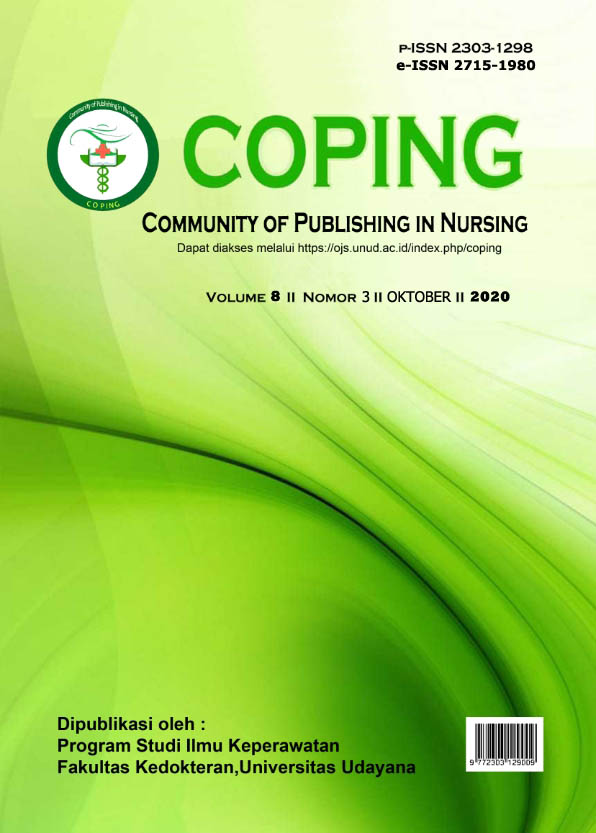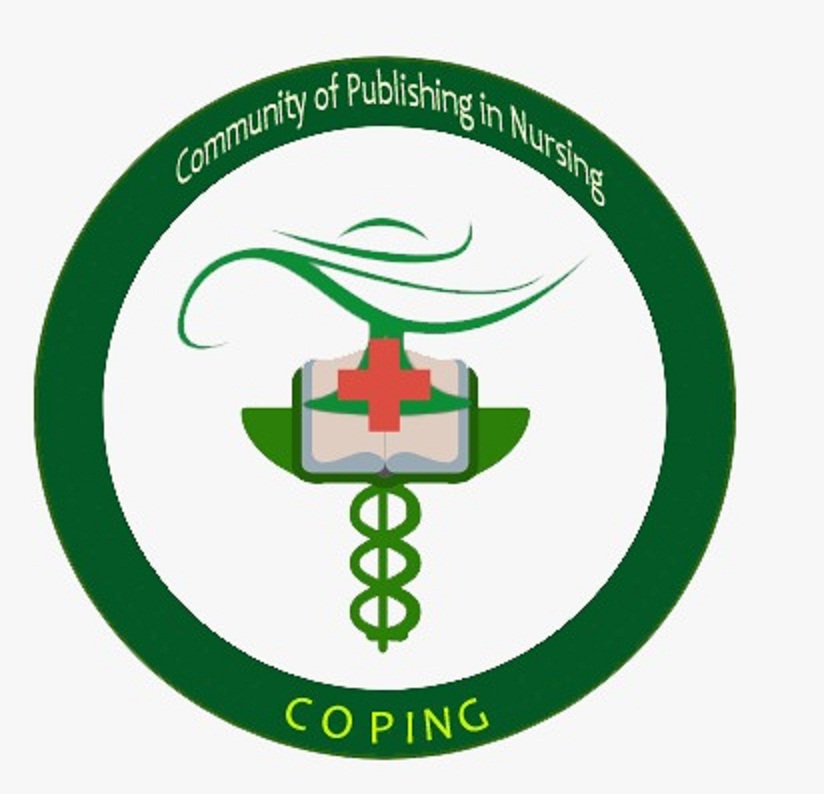EFEKTIFITAS PEMBERIAN ZINC DALAM PENINGKATAN TINGGI BADAN (TB) ANAK STUNTING DI KABUPATEN PATI
Abstract
Based on Riskesdas 2010, the prevalence of stunting in children under five in Indonesia reaches 35.7%. Stunting in children under five can be detrimental to physical development and affect low intelligence levels. Stunting is nine times more likely to have IQ scores below the average than children with normal nutritional status. One of the factors that directly influence stunting under five is the low intake of nutrients, especially energy, protein, iron, zinc, and calcium. Pati Regency is in second place in Central Java, where data from the Pati District Health Office as of April 2019 shows that the Jakenan Health Center area is ranked first. This study aimed to see the effectiveness of giving zinc (20 mg, twice a week for three months) to stunting children by comparing it to a control group, using a randomized pretest-posttest control group design. The total samples are 20 children. The study showed that there was a significant difference in the height of children who received zinc compared to the control group with a value of 0.001. The average increase height in the intervention group was 3.35 cm, while in the control group it was only 1 cm. The weight of children in the intervention group an average increase of 0.885 kg while in the control group was only 0.17 kg. This study provides information to stunting toddlers, especially those aged less than two years, twice a week as much as 20 mg regularly and consuming food as a source of nutrition for stunting toddlers.
Downloads
References
2. Kementerian Kesehatan RI Direktorat Jenderal Bina Gizi dan Kesehatan Ibu dan Anak. Keputusan Menteri Kesehatan Republik Indonesia Nomor : 1995/MENKES/SK/XII/2010 Tentang Standar Antropometri Penilaian Status Gizi Anak. Jakarta; 2011
3. Badan Penelitian dan Pengembangan Kesehatan Departemen Kesehatan RI. Laporan Hasil Riset Kesehatan Dasar 2010. Jakarta; 2010. p iii, 23, 26
4. Puspitasari FD, Sudargo T, Gamayanti IL. Hubungan Antara Status Gizi dan Faktor Sosiodemografi dengan Kemampuan Kognitif Anak Sekolah Dasar di Daerah Endemis GAKI. Gizi Indonesia 2011; 34(1):52-60
5. Astari LD, Nasoetion A, Dwiriani CM. Hubungan Konsumsi ASI Dan MP- ASI Serta Kejadian Stunting Anak Usia 6-12 Bulan di Kabupaten Bogor. Media Gizi dan Keluarga Juli 2006; 30 (1) 15-23
6. Roosita K, Sunarti E, Herawati T. Nutrient Intake and Stunting Prevalence among Tea Plantation Workers’ Children in Indonesia. Journal of Developments in Sustainable Agriculture 2010; 5: 131-135. [accessed Desember 10, 2012]. Available from: URL http:/www.jstage.jst.go.jp/article/jdsa/5/1/5_1_131/_pdf.
7. Susilowati, Kusharisupeni, Fikawati S, Achmad K. Breast-feeding duration and children’s nutritional status at age 12-24 months. Paediatrica Indonesiana January 2010; 50: 56-61
8. Imdad A, Yakoob MY, Bhutta ZA. Impact of maternal education about complementary feeding and provision of complementary foods on child growth in developing countries. BMC Public Health 2011; 11(Suppl 3):S25. [accessed December 10, 2012]. Available from: URL: http://www.biomedcentral.com/1471- 2458/11/S3/S25.
9. Rah JH, Akhter N, Semba RD, de Pee S, Bloem MW, Campbell AA, et al. Low dietary diversity is a predictor of child stunting in rural Bangladesh. European Journal of Clinical Nutrition 2010; 64: 1393–1398. [accessed December 13, 2012]. Available from: URL: www.nature.com/ejcn.
10. Astari LD, Nasoetion A, Dwiriani CM. Hubungan Karakteristik Keluarga, Pola Pengasuhan dan Kejadian Stunting Anak Usia 6-12 Bulan. Media Gizi dan Keluarga 2005; 29 (2): 40-46
11. Jesmin A, Yamamoto SS, Malik AA, Haque MA. Prevalence and Determinants of Chronic Malnutrition among Preschool Children: A Cross- sectional Study in Dhaka City, Bangladesh. J Health Popul Nutr October 2011; 29(5):494-499. [accessed December 10, 2012]. Available from: URL: http://www.ncbi.nlm.nih.gov/pmc/articles/PMC3225111/
12. PERSAGI. Penuntun Konseling Gizi. Jakarta : PT. Abadi; 2011. Hlm 12,25- 47
13. Noviati, Susanto JC, Selina H, Mexitalia M. The influence of intensive nutritional counseling in Posyandu towards the growth 4-18 month old children. Paediatrica Indonesiana 2006; 46: 57-63
14. Ramli, Agho KE, Inder KJ, Bowe SJ, Jacobs J, Dibley MJ. Prevalence and risk factors for stunting and severe stunting among under-fives in North Maluku province of Indonesia. BMC Pediatrics 2009; 9:64. [accessed December 10, 2012]. Available from: URL: http://www.biomedcentral.com/1471-2431/9/64.
15. World Health Organization (WHO). Infant and Young Child Feeding. WHO; 2009. p 4.
16. Badan Pusat Statistik. Istilah Statistik. Jakarta; 2013. [accessed Novenber 10, 2013]. Available from: URL: http://www.bps.go.id/menutab.php?tab=6&ist=1&var=P
17. Azwar S. Sikap Manusia Teori dan Pengukurannya. Edisi kedua. Yogyakarta: Pustaka Pelajar; 2011. Hlm 154-157
18. Supariasa IDN, Bachyar B, Ibnu F. Penilaian Status Gizi. Jakarta: EGC; 2002. hlm 114
19. Candra, Aryu. Pengaruh Suplementasi Zinc dan Zat Besi Terhadap Berat Badan dan Tinggi Badan Balita. JNH (Journal of Nutrition and Health). 5(1); 2017; 37-44. Available from URL: ile:///F:/STIKES%20BUP/Tugas/Smstr%203/E%20journal/E%20Journal%20Zinc/PDF/Dalam%20negeri/13747-51491-2-PB.pdf







